NVIDIA & EVGA GeForce GTX 670 2GB Video Card Review
The EVGA GeForce GTX 670 SC
Our friends over at EVGA sent a retail boxed card for testing, so that we will go dive into the features of that card. EVGA will initially be carrying four difference GeForce GTX 670 models:
- EVGA GeForce GTX 670 2GB: $399.99
- EVGA GeForce GTX 670 2GB Superclocked: $419.99
- EVGA GeForce GTX 670 4GB: $469.99
- EVGA GeForce GTX 670 4GB Superclocked: $489.99
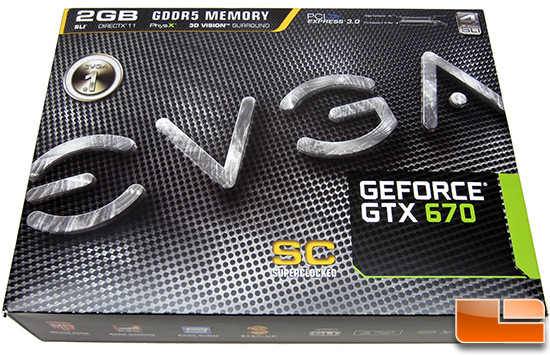
The card that EVGA gave us was the $419.99 priced 2GB Superclocked edition, so it comes factory overclocked. This card will be available under part number 02G-P4-2672.
EVGA GeForce GTX 670 Superclocked Features:
- Base Clock: 967 MHz
- Boost Clock: 1046 MHz
- Memory Clock: 6210 MHz (effective)
- Memory Size: 2GB GDDR5
- Texture Fill Rate: 108.3 GT/s
- Memory Bandwidth: 198.72GB/sec
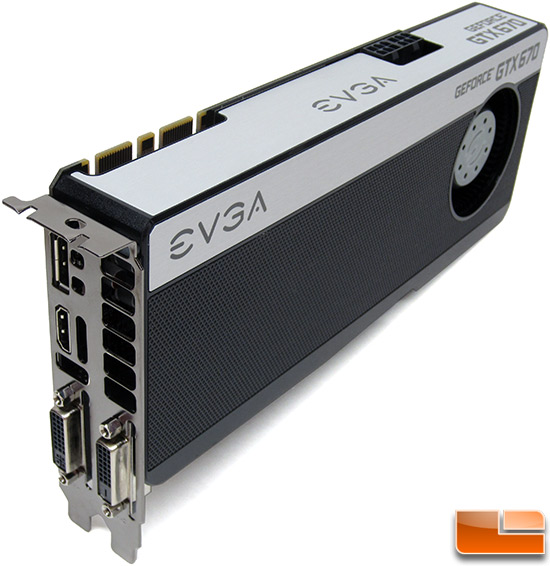
The EVGA graphics card uses the NVIDIA reference design for the the PCB and the GPU cooler, but has been dressed up a bit to look unique. Besides adding several stickers to the plastic fan shroud, EVGA also changed out the exhaust bracket for a high-flow model.
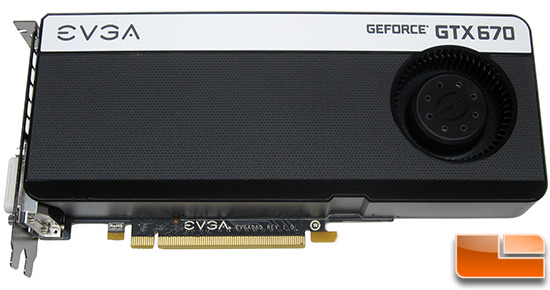
As we mentioned on the previous page, the GeForce GTX 670 is 9.5″ in length and is a dual-slot card.
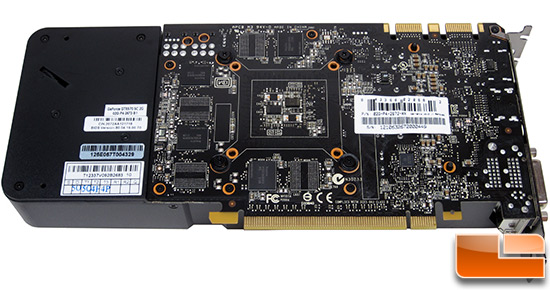
Turning the NVIDIA GeForce GTX 690 you can see that the PCB stops short and that the fan is actually bolted to a base plate that is being used on the card. NVIDIA managed to move components around on the PCB and utilize the back of the PCB more effectively. This is how they were able to shorten the PCB down to under 7″ and make the card so short. NVIDIA had this to say about the new PCB design.
“To get the GeForce GTX 670 into smaller form factor chassis, we made a number of adjustments to the reference board to save space.
Thanks to the power efficiency of the GTX 670 GPU, we were able to move the GTX 670s power supply to the west side of the GPU. The GPU was then rotated to improve power integrity and increase efficiency, as the power supply is much closer to the GPU than on traditional boards.
With the GTX 670s power circuitry moved to the other side of the board, the area on the right side of the PCB was empty and was therefore removed to save board space.
To provide the cooling youd expect on a high performance GPU, we then incorporated the same cooling fan used on the GeForce GTX 680. This fan is fitted with acoustic dampening material to minimize unwanted tones in the fan noise.
The GTX 670s blower fan exhausts hot air from the GPU outside the system chassis. This helps to reduce chassis temperature inside the PC, as GPU heat is blown outside the PC rather than being trapped within it. This feature is particularly beneficial for small form factor PCs.” – NVIDIA PR
The one thing that we noticed with this design is that there are now GDDR5 memory chips on the back of the board running at 6GHz and beyond with no back plate or active cooling. We will be testing these GDDR5 memory IC’s to see how hot they get on our temperature testing page.
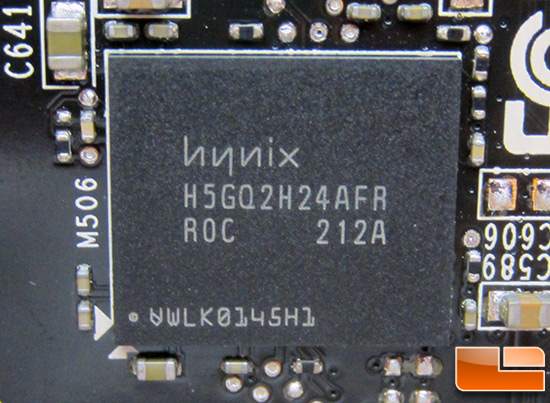
EVGA is using GDDR5 memory chips that are manufactured by Hynix Semiconductor. Their marking (H5GQ2H24AFR-R0C) suggests that they work at a voltage of 1.5 volts and run at a speed of 6.0Gbps. These are relatively new memory ICs as Hynix just released them in Q4 2011.
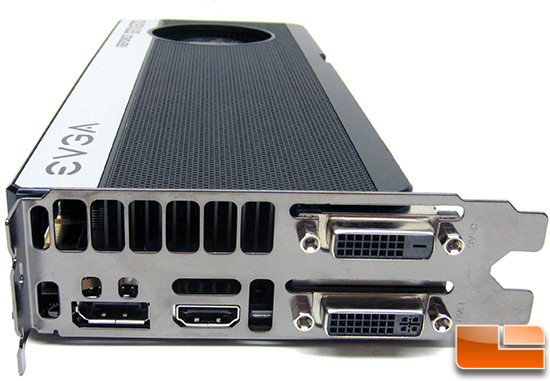
The NVIDIA GeForce GTX 670 2GB GDDR5 graphics card has two dual-link DVI
outputs (one dual-link DVI-D and one DVI-D) along with DispalyPort and HDMI connectors. EVGA uses a High-Flow video card exhaust bracket that helps lower temperatures and noise levels. EVGA has been using designs like this since 2010 and they work great.
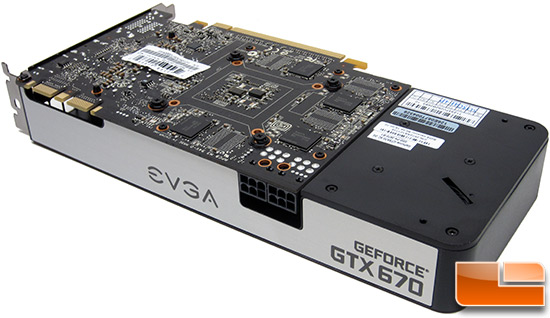
Here is a different angle of the EVGA GeForce GTX 670 Superclocked. As you can see the end of the card is enclosedand the corners are rounded. We used a pair of dial calipers and found the mounting holes around the
GPU are spaced 58mm apart in case you are curious about mounting a water
block or a third party GPU cooler.
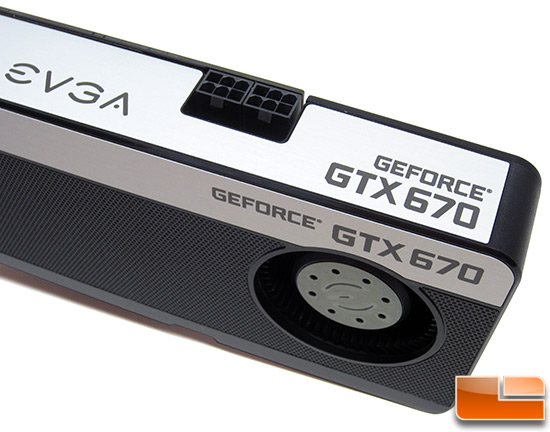
The NVIDIA GeForce GTX 670 video card requires a 500 Watt or greater power supply with a minimum of 30 Amps on the +12V rail and two 6-pin PCI Express power connectors for proper connection. It should be noted that the NVIDIA minimum system power requirement is based on a PC configured with an Intel Core i7 3.2GHz CPU. These are pretty reasonable power requirements, so that is good news for everyone!
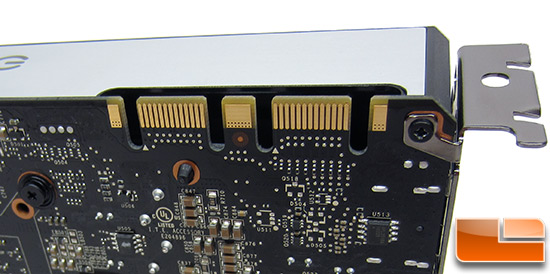
The NVIDIA GeForce GTX 690 graphics cards has full SLI support and comes with a pair of SLI bridges located along the top edge of the graphics card. The GeForce GTX 670 supports just 2-Way and 3-Way SLI, so don’t expect any Quad-SLI gaming with this card!
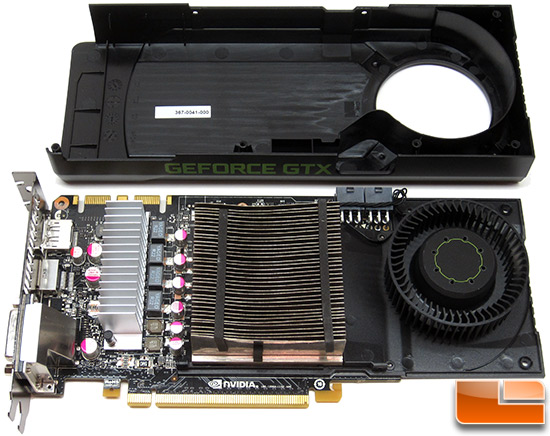
With the black plastic fan shroud removed you can see that NVIDIA uses two heat sinks to keep the hot components cool. One is over the GK104 Kepler GPU and the other is over the PWM area. The fan that is attached to the end of the card blows air across the front of the card.
The fan is held on with six screws and can be easily removed.
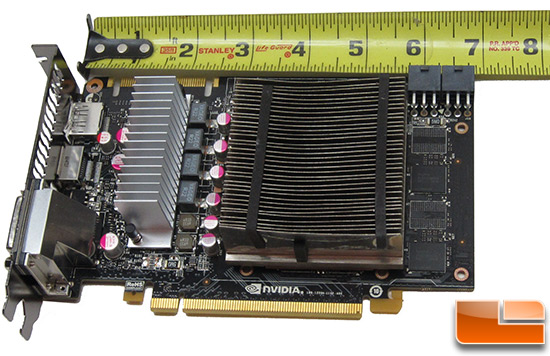
Take a look at how short the PCB is on the GeForce GTX 670 reference card! At 6.8125-inches, this is one of the smallest video cards that has ever come across our test bench. This card is just begging for water cooling!
Now that we have a good feel for what the GeForce GTX 670 is we can show you the test system and get straight to the performance numbers

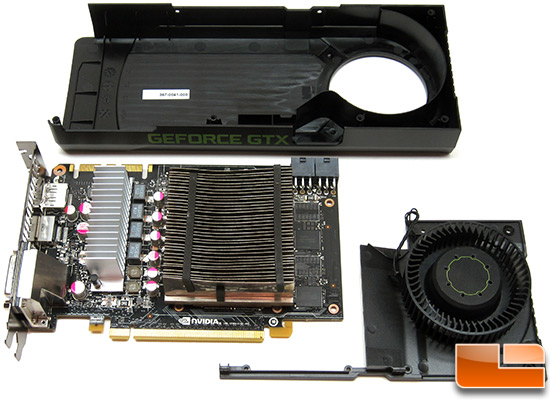
Comments are closed.